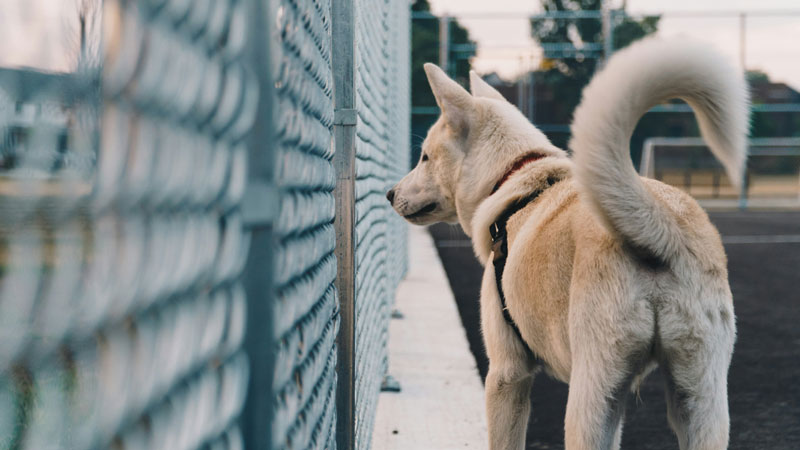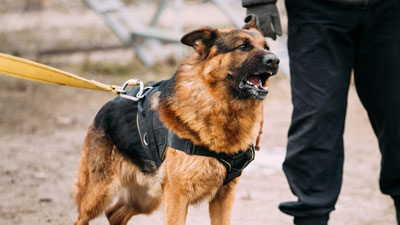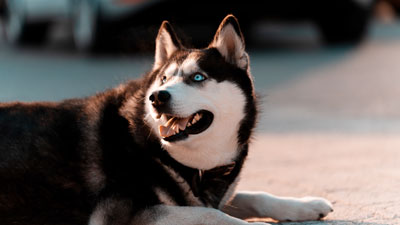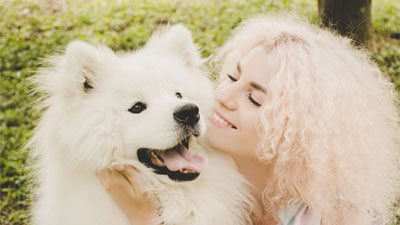- Size
- Smallest
- Small
- Small to Medium
- Medium
- Large
- Giant
- Characteristics
- Smartest
- Hypoallergenic
- Fluffy
- Best Guard
- Best Family
- Best for Kids
- Low Shedding
- Healthiest
- Police Dogs
- Most Calm
- Quietest
- Color
- White
- Black
- Grey
- Brown
- Blue
- Red
- Coat
- Hairless
- Short
- Long
- Origin
- Japan
- China
- Australia
- Germany
- Italy
- United States
- France
- Group
- Hound
- Terrier
- Herding
- Toy
- Working
- Sporting
What Do The Different Dog Tail Positions Mean?

Photo by Hermes Rivera on Unsplash
For centuries, humans have cultivated diverse breeds of dogs, transforming them into cherished family members. As responsible dog parents, we have delved into the intricacies of canine behaviors, seeking to understand the thoughts racing through their adorable heads. Dogs, in turn, have developed the ability to communicate with us, adapting their body language to convey their needs. While we may not always decipher our canine companions' thoughts with 100% certainty, one key indicator of their emotional state lies in the position of their tails.
A wagging tail is often seen as a sign of a happy and friendly dog, but did you know that a dog's tail can communicate much more than just happiness? A dog's tail can act as a barometer of their emotional state and intentions. By observing the position and movement of a dog's tail, you can gain valuable insights into their mood and behavior.
In this article, we will explore the different dog tail positions and what they communicate.
Tail Positions and Their Meanings
To grasp the nuanced information conveyed through tail positions, it's essential to recognize the influence of breed-specific variations. Each dog breed boasts distinctive tail shapes that contribute to their unique communication techniques. Notably, breeds such as Pugs showcase short, curled tails, creating a contrast with the long, naturally elevated tails observed in Huskies, Basenjis, and Pomeranians. Understanding these breed-specific traits enhances our ability to interpret the language of dog tails accurately.
Here are 10 Dog Tail Positions & What They Mean:
1. High and Curved
A dog with their tail held high and curved over their back often displays confidence and a sense of dominance. This tail position is commonly seen in breeds such as the Akita or Siberian Husky. It indicates a self-assured and assertive demeanor.
2. Wagging Loosely
A loose and relaxed wagging tail is a sign of a friendly and approachable dog. This tail position typically indicates a positive and contented state of mind. The wagging motion may vary in speed and intensity depending on the dog's excitement level, but the loose and relaxed posture suggests a temperament that is open to interaction.
3. Straight Out
When a dog holds their tail straight out horizontally, it can indicate alertness and attentiveness. This position is common in breeds such as the German Shepherd or Doberman Pinscher. It suggests a heightened sense of awareness and readiness to respond to any stimuli in their environment.
4. Tucked Between Legs
A tail that is tucked tightly between a dog's legs signals fear, anxiety, or submission. This is often seen in dogs that are feeling threatened or intimidated. They may be trying to make themselves appear smaller or less noticeable. It's important to approach dogs in this tail position with caution and to create a calm and safe environment to help them feel more secure.
5. Wagging Tightly or Stiffly
Contrary to popular belief, not all wagging tails indicate a friendly and happy dog. If a dog's tail is wagging stiffly and tightly, it can be a sign of alertness or aggression. This type of tail wag is often seen when a dog is on guard or feels threatened. It's important to pay attention to other body language cues to determine the dog's overall emotional state.
6. Low and Slow
A dog with their tail held low and wagging slowly may be feeling unsure or cautious. It can indicate a level of anxiety or uncertainty about a situation or interaction. This tail position is commonly seen in dogs that are hesitant or unsure of their surroundings. It's important to approach these dogs with patience, allowing them to adjust and gain confidence at their own pace.
7. High and Stiff
When a dog's tail is held high and appears stiff, it can be a sign of alertness, tension, or even aggression. This tail position is often seen in dogs that are on guard or feel threatened. It's important to exercise caution and give these dogs space, as they may be preparing to defend themselves if they perceive a threat.
8. Rapid Side-to-Side Wag
A rapid side-to-side wagging tail is often associated with excitement and anticipation. This tail wag can be seen when a dog is eager to engage in play or receive attention. It's important to note that this wagging should be loose and relaxed rather than stiff and tense, as tension in the tail can indicate a different emotional state.
9. Tail Held Low and Still
A dog with their tail held low and still may be feeling fearful, stressed, or even unwell. This tail position is often seen in dogs that are experiencing discomfort or pain. It's crucial to be attentive to your dog's overall behavior and health if you notice this tail position, as it may indicate an underlying issue that needs attention.
10. Tail Tucked to One Side
When a dog holds their tail tucked to one side, it can indicate insecurity or submission. This tail position is often seen in dogs that are trying to appease or defer to a more dominant individual. It's important to provide a calm and safe environment for these dogs to help them feel more secure and comfortable.
Conclusion
It's important to remember that while tail positions can provide insights into a dog's emotional state, they should be considered alongside other body language cues. Dogs communicate through a combination of postures, facial expressions, vocalizations, and tail movements. Understanding and interpreting these signals as a whole can help you better understand your dog's needs and emotions.
Additionally, it's crucial to recognize that individual dogs may have unique tail characteristics based on their breed, genetics, and physical attributes. Some dogs may naturally have a curly tail, while others may have a long and straight tail. Observing the typical positions and movements of your specific dog's tail can provide even more precise insights into their communication.
You May Also Like
 Dog BreedsThe 10 Dog Breeds with Prominent Hackles
Dog BreedsThe 10 Dog Breeds with Prominent Hackles Dog BehaviorWhat Does It Mean When A Dog's Hackles Stand Up?
Dog BehaviorWhat Does It Mean When A Dog's Hackles Stand Up? Dog BehaviorThe 6 Common Dog Sounds and Their Meanings
Dog BehaviorThe 6 Common Dog Sounds and Their Meanings Help & AdviceWhat Is The Hardest Dog Trick?
Help & AdviceWhat Is The Hardest Dog Trick? Dog Training TipsHere are the 7 Most Important Dog Commands
Dog Training TipsHere are the 7 Most Important Dog Commands Dog Training Tips5 Easy Steps: How to Teach a Dog to Smile
Dog Training Tips5 Easy Steps: How to Teach a Dog to Smile